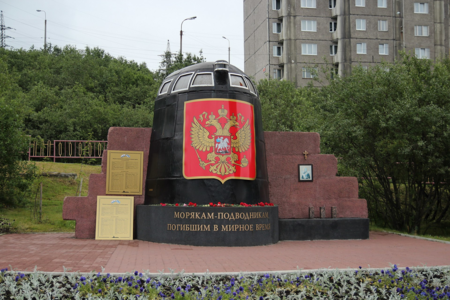
On August 12, 2000 (23 years ago), while in routine exercise, a disaster explosion happened aboard the Russian Navy submarine Kursk (K-141), killing the entire crew of 118 men aboard.
The British and Norwegian navies offered assistance, but Russia initially refused all help. All 118 sailors and officers aboard Kursk died. The Russian Admiralty initially told the public that the majority of the crew died within minutes of the explosion, but on 21 August, Norwegian and Russian divers found 24 bodies in the ninth compartment, the turbine room at the stern of the boat. Captain-lieutenant Dmitri Kolesnikov wrote a note listing the names of 23 sailors who were alive in the compartment after the boat sank.
Kursk carried a potassium superoxide cartridge of a chemical oxygen generator; these are used to absorb carbon dioxide and chemically release oxygen during an emergency. However, the cartridge became contaminated with seawater and the resulting chemical reaction caused a flash fire which consumed the available oxygen. The investigation showed that some men temporarily survived the fire by plunging underwater, as fire marks on the bulkheads indicated the water was at waist level at the time. Ultimately, the remaining crew burned to death or suffocated.
Submarine recovery
A consortium formed by the Dutch companies Mammoet and Smit International was awarded a contract by Russia to raise the vessel, excluding the bow. They modified the barge Giant 4 which raised Kursk and recovered the remains of the sailors.During salvage operations in 2001, the team first cut the bow off the hull using a tungsten carbide-studded cable. As this tool had the potential to cause sparks that could ignite remaining pockets of reactive gases, such as hydrogen, the operation was executed with care. Most of the bow was abandoned and the rest of the vessel was towed to Severomorsk and placed in a floating dry dock for analysis.
The remains of Kursk's reactor compartment were towed to Sayda Bay on Russia's northern Kola Peninsula, where more than 50 reactor compartments were afloat at pier points after a shipyard had removed all the fuel from the boat in early 2003.
Some torpedo and torpedo tube fragments from the bow were recovered and the rest was destroyed by explosives in 2002.




